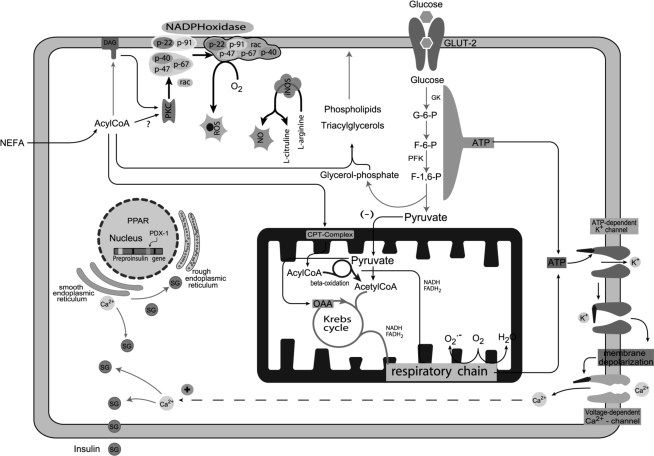Figure 2.
Mechanism of insulin secretion stimulated by glucose and fatty acids in pancreaticβ-cells Glucose and fatty acids generate ATP, which promotes closure of the ATP-dependent K+ channel leading to cell membrane depolarization. As a consequence, voltage-dependent Ca2+ channels are opened, increasing intracellular Ca2+ concentration leading to insulin secretion. The NADPH oxidase complex in the plasma membrane is activated through protein kinase C (PKC), which is activated by fatty acid derived signalling molecules. The production of nitric oxide (NO) by inducible nitric oxide synthase (iNOS) is up-regulated by cytokines and fatty acids subsequently impacting on pancreatic β-cell function. CPT-complex, carnitine palmitoyl transferase complex; F-1,6-P, fructose-1,6-diphosphate; F-6-P, fructose-6-phosphate; GLUT-2, glucose transporter-2; GK, glucokinase; G-6-P, glucose-6-phosphate; OAA, oxaloacetic acid; PDX-1, pancreatic duodenal homeobox gene-1; PFK, phosphofructokinase; PKC, protein kinase C; PPAR, peroxisome proliferator-activated receptor; ROS, reactive oxygen species; SG, secretory granule.

